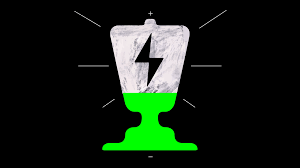
Breaking News
 Christmas Truce of 1914, World War I - For Sharing, For Peace
Christmas Truce of 1914, World War I - For Sharing, For Peace
 The Roots of Collectivist Thinking
The Roots of Collectivist Thinking
 What Would Happen if a Major Bank Collapsed Tomorrow?
What Would Happen if a Major Bank Collapsed Tomorrow?
Top Tech News
 Travel gadget promises to dry and iron your clothes – totally hands-free
Travel gadget promises to dry and iron your clothes – totally hands-free
 Perfect Aircrete, Kitchen Ingredients.
Perfect Aircrete, Kitchen Ingredients.
 Futuristic pixel-raising display lets you feel what's onscreen
Futuristic pixel-raising display lets you feel what's onscreen
 Cutting-Edge Facility Generates Pure Water and Hydrogen Fuel from Seawater for Mere Pennies
Cutting-Edge Facility Generates Pure Water and Hydrogen Fuel from Seawater for Mere Pennies
 This tiny dev board is packed with features for ambitious makers
This tiny dev board is packed with features for ambitious makers
 Scientists Discover Gel to Regrow Tooth Enamel
Scientists Discover Gel to Regrow Tooth Enamel
 Vitamin C and Dandelion Root Killing Cancer Cells -- as Former CDC Director Calls for COVID-19...
Vitamin C and Dandelion Root Killing Cancer Cells -- as Former CDC Director Calls for COVID-19...
 Galactic Brain: US firm plans space-based data centers, power grid to challenge China
Galactic Brain: US firm plans space-based data centers, power grid to challenge China
 A microbial cleanup for glyphosate just earned a patent. Here's why that matters
A microbial cleanup for glyphosate just earned a patent. Here's why that matters
 Japan Breaks Internet Speed Record with 5 Million Times Faster Data Transfer
Japan Breaks Internet Speed Record with 5 Million Times Faster Data Transfer
This most innovative battery designs of the year

How we store that energy is a constant work in progress, and while plenty of scientists are making important but incremental advances with inventive new materials and electrolytes, others are out to entirely reinvent what we think of as a battery. Here are five examples from 2018 that might open up new doorways in energy storage, and are thought-provoking concepts that came from thinking outside the square.
Consider a regular spring. If you coil that spring with your finger, you are packing it with potential energy. If you then allow it to uncoil, you are letting that energy free. Now imagine that principle applied to a tower of stackable concrete blocks, with a six-armed crane acting as the finger.
This is the vision of Swiss startup Energy Vault, which is developing a new kind of battery, if you can call it that, designed to store energy from renewables like wind and solar in skyscraper-sized concrete towers. To charge it, the crane lifts blocks off the ground and stacks them to create a tower. To discharge it, the crane lets gravity lower the blocks to the ground and converts the kinetic energy generated during the descent into electricity.
This is a similar premise to pumped hydro plants, which are commonplace and also rely on gravity. These pump water up to into a reservoir during periods of low grid demand, and then capture the power generated as it is released to rush downhill through turbines. Energy Vault says its solution could hold a capacity of up to 35 MWh and 4 MW peak power and offer a roundtrip efficiency of 90 percent. It is deploying its first system in India in 2019.

 The State's Last Stand
The State's Last Stand


